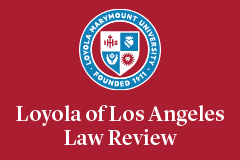Abstract
In 2014, Proposition 47 reclassified seven low-level felonies to misdemeanors, demonstrating voters’ striking rejection of California’s historically punitive sentencing policies. This Note examines the recent wave of California Supreme Court jurisprudence interpreting Proposition 47 by exploring the court’s varied readings of the initiative’s ballot materials and statutory text. While the court has liberally construed relief for affected property crimes, it has responded ambivalently in more controversial areas such as drug offenses, mandatory parole periods, and automatic resentencing. This variation reveals ideological tensions between the goal of expanding ameliorative benefits to low-level offenders and anxiety regarding public safety. This Note analyzes the court’s opinions as expressions of Proposition 47’s own hybrid and conflicting aims of reducing penalties for certain drug and property crimes, while continuing to harshly punish offenders perceived as violent and recidivist. As such, the court’s recent opinions and Proposition 47 itself are products of California’s complex sentencing history, which has vacillated between progressive and reactive policy extremes.
Recommended Citation
Kayla Burchuk, Misdemeanors for All Purposes? Interpreting Proposition 47’s Ameliorative Scope in a New Era of Criminal Justice Reform, 53 Loy. L.A. L. Rev. 179 (2019).
Included in
Criminal Law Commons, Law and Society Commons, Legislation Commons, State and Local Government Law Commons



